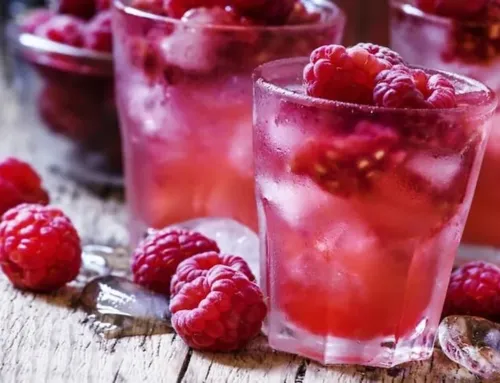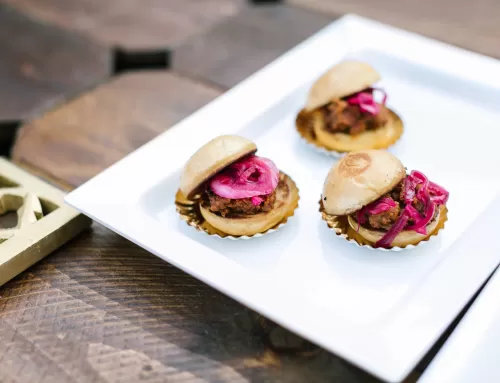The Guide to Bar Terminology To Become a Pro Bartender!
Are you interested in becoming a professional bartender? Understanding the terminology used in the bartending industry is essential to excel in this field. In this guide, we have compiled a list of 30 popular bar terminologies to help you feel more confident behind the bar.
By familiarizing yourself with these popular bar terminologies, you will feel more prepared and professional behind the bar. Whether you aspire to be a seasoned bartender or simply want to impress your friends with your knowledge, mastering these terms is a crucial step. Check our bar Service
Understanding Bar Terminology for Events
Planning a wedding, fundraiser, or company party with a bar? Then bar terminology isn’t just bartender slang—it’s the language that shapes your guest experience and your invoice. Whether you’re choosing an open bar, reviewing a drink menu, or hiring bartenders, knowing the difference between “top shelf,” “neat,” and “rocks” helps you avoid confusion and stay in control.
At Gotham Catering, we offer full bar services for NYC events—from custom cocktail programs to professional staffing. This guide breaks down the essential bar terms every host or planner should know before the first round is served.
Explore our bar catering services in NYC to see how we bring expertise, elegance, and efficiency to every pour.
Bar Service Styles Explained: Open, Hosted, Cash
Before you order drinks, you have to choose your service format. The three most common bar setups for events are:
- Open Bar: The host covers the full cost of all drinks for a set period. Guests drink freely without paying.
- Hosted Bar: The host covers drinks up to a set dollar limit, drink count, or time. After that, it may switch to cash.
- Cash Bar: Guests pay for their own drinks like at a regular bar. This option reduces cost but can affect hospitality.
The format you choose affects your budget, the flow of service, and guest expectations. A well-run open bar feels generous and smooth, while a cash bar must be clearly communicated to avoid awkwardness.
Learn how we structure full-service bar setups to match your event’s style and budget.
How Drinks Are Served: Neat, Up, On the Rocks
Ever hear someone order a whiskey “neat”? Or a martini “up”? These terms describe how a drink is served, and they impact everything from temperature to dilution:
- Neat: Spirit poured straight from the bottle into the glass, no ice, not chilled.
- Up (or Straight Up): Chilled with ice (typically stirred or shaken), then strained into a stemmed glass without ice.
- On the Rocks: Served over ice cubes in a short glass.
- With a Twist: Garnished with a citrus peel that’s twisted to release oils.
These options influence bar speed, presentation, and how long a drink stays cold. They also help bartenders serve your guests exactly what they want.
Review our service approach to understand how drink styles fit into broader event hospitality.
Essential Bar Tools and What They Do
Your bartender isn’t just pouring—they’re using a toolkit built for speed, accuracy, and flavor. Here are the basics:
- Jigger: A dual-sided metal measuring tool for precise pours.
- Muddler: A pestle-like tool used to mash fruits, herbs, and sugar (think mojitos).
- Boston Shaker: A two-piece shaker system used to chill and mix cocktails.
- Hawthorne Strainer: A coiled strainer that fits over the shaker to filter out ice and solids.
- Bar Spoon: Long-handled spoon for stirring drinks, often used in “built” cocktails like Old Fashioneds.
Knowing these tools helps hosts understand what they’re paying for—and how professionals deliver quality under pressure.
Explore our event bartending staff and how they’re trained to deliver polished service using these tools every time.
What Is “Top Shelf” vs “Well” Liquor?
When you hear “top shelf” and “well,” think quality and cost. Here’s the breakdown:
- Well Liquor: House brands used in basic mixed drinks. Often budget-friendly and poured when no brand is requested.
- Call Liquor: Mid-range brands guests can ask for by name (e.g., “Tanqueray and tonic”).
- Top Shelf: Premium spirits stored on the top shelves behind the bar. These are higher in cost and quality, often aged or artisanal.
Event hosts should clarify what’s included in their bar package—especially if offering top shelf or call brands, as pricing varies significantly.
Learn how we build themed bar experiences with layered spirit selections that match your guest list and vibe.
Cocktail Styles: Stirred, Shaken, Muddled
How a cocktail is prepared isn’t just bartender flair—it affects flavor, mouthfeel, and guest expectation. Here are the essential terms:
- Shaken: Combines spirits, juice, dairy, or egg with ice in a shaker to chill and aerate. Think daiquiris or margaritas.
- Stirred: Mixes spirit-heavy drinks gently with ice to chill without adding air—ideal for Manhattans and martinis.
- Muddled: Herbs or fruits are gently crushed to release oils and flavor before being mixed—essential for mojitos or smashes.
- Box: A technique where the drink is poured in and out of a shaker once to quickly mix without shaking.
Our bartenders use these techniques to maintain flavor balance while keeping lines moving. From flair to function, the method matters.
Explore how cocktail styles complement plant-based and seasonal bar menus for elevated event service.
Glassware Matters: Types and Their Purpose
Each cocktail has a home—and the right glass makes a difference in presentation and function. Here’s a quick guide:
- Highball: Tall glass used for spirits with soda or juice (e.g., rum and Coke).
- Lowball: Shorter glass for stronger drinks served with ice or a splash of mixer.
- Coupe: Stemmed glass ideal for shaken “up” cocktails like sidecars or daiquiris.
- Flute: Slim glass perfect for sparkling wines and fizzy cocktails.
- Mug: Often used for hot drinks like toddies or grogs.
Serving the right drink in the wrong glass can confuse guests and compromise the experience. Our bartenders are trained to match every pour to the proper vessel.
See how our setups and glassware come together in our event gallery.
Garnishes, Rims, and Presentation Terms
Drinks are visual. Beyond taste, guests notice the twist, the foam, the ice, and the rim. Here are terms you might hear at the bar:
- Zest: Thin strip of citrus peel expressed over the drink for aroma.
- Twist: A curled piece of citrus peel used as garnish—often lemon or orange.
- Rimmed: Glass edges coated with sugar, salt, or spice blends.
- Lace: The last ingredient poured gently on top for a layered look.
- Flaming: A showy garnish technique where an ingredient is briefly lit for flair.
Our bartenders blend visual impact with event pacing to keep drinks both memorable and efficient.
Browse our seasonal menus to see how garnishes and themes evolve throughout the year.
Non-Alcoholic Bar Terms: Mocktails and Zero-Proof
Not every celebration has to include alcohol. We build inclusive bar menus that feature:
- Mocktail: A non-alcoholic drink designed to look and feel like a cocktail.
- Zero-Proof: Spirits and bitters crafted without alcohol but full of flavor.
- Virgin: A cocktail recipe made without the alcohol (e.g., virgin mojito).
- Chaser: A non-alcoholic mixer consumed after a shot, often soda or juice.
These options are crafted with as much care as traditional cocktails. Whether for wellness, religion, pregnancy, or recovery, we make sure every guest has something they’re excited to sip.
See how inclusive bar options are built into our non-alcoholic event catering.
Plan Like a Pro: Speaking the Language at Your Event
Bar language isn’t just trendy—it’s tactical. When you understand terms like supercall (ultra-premium liquor), shooter (spirit in a shot glass), or fix (a sour-style drink with crushed ice), you communicate better with your vendors and serve your guests more confidently.
Other key terms that may come up during event planning:
- Call Drink: A drink where the guest specifies the liquor brand (“Jack and Coke”).
- Well Drink: A basic liquor + mixer combo using the house brand.
- Flip: A creamy egg-based cocktail, often with spices.
- Sour: A short drink made with liquor, lemon/lime juice, and sugar.
- Julep / Smash: Minty, icy, bourbon-based drinks perfect for warm-weather events.
Need help decoding your quote or customizing your bar experience? We’ll walk you through every term—and every pour.
Get expert support from our event planning team to help you speak the language and run your bar like a pro.
The Ultimate Guide to Bar Terminology
Questions —Answered
What is a Shooter?
A shooter is a shot of whiskey or another kind of spirit usually consumed quickly.
What is a Virgin drink?
A Virgin drink is a non-alcoholic beverage, perfect for those looking to enjoy a flavorful drink without the alcohol.
What is a Well Drink?
A Well Drink is a liquor and mixer combination where neither are defined brands, such as Gin and Tonic or Rum and Coke.
More Questions?
Let’s Start Planning Your Event!
Our planners are standing by to answer your questions and bring your vision to life we are proud caterer of NYC Carter School
Contact Gotham Catering And Events For Your Next Event . Corporate or wedding Gotham catering And Events will offer you the best services available. From Healthy Choices To Special diets please call us today. Contact Gotham Catering




